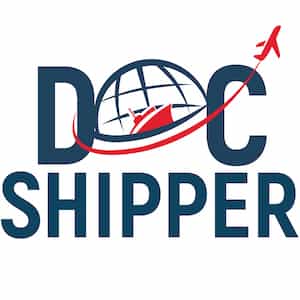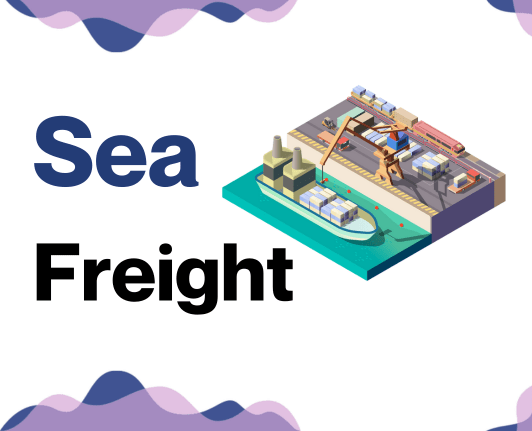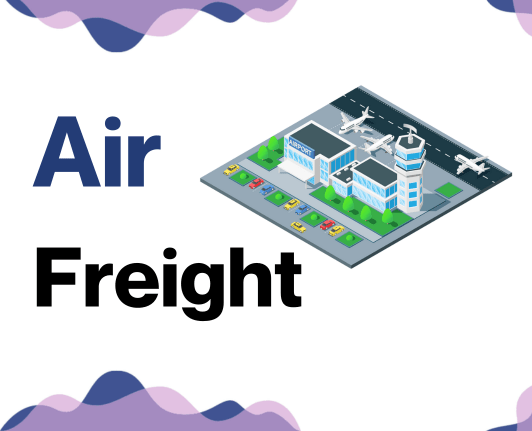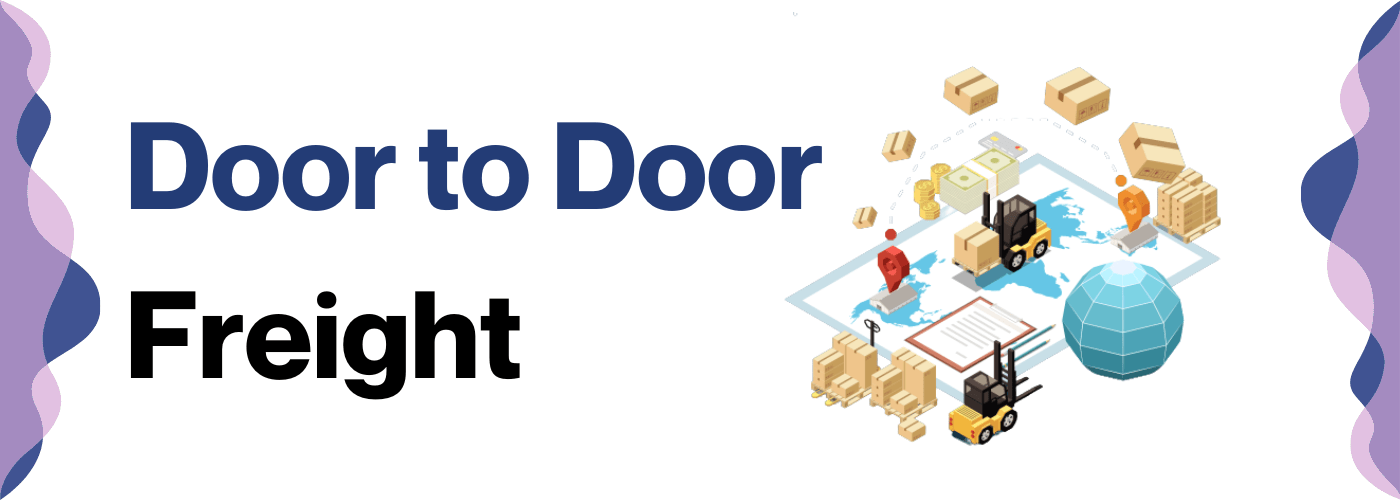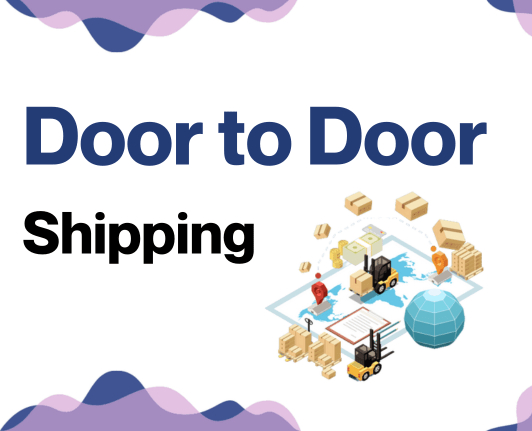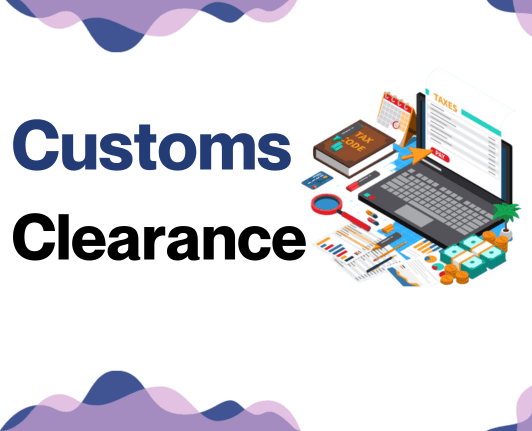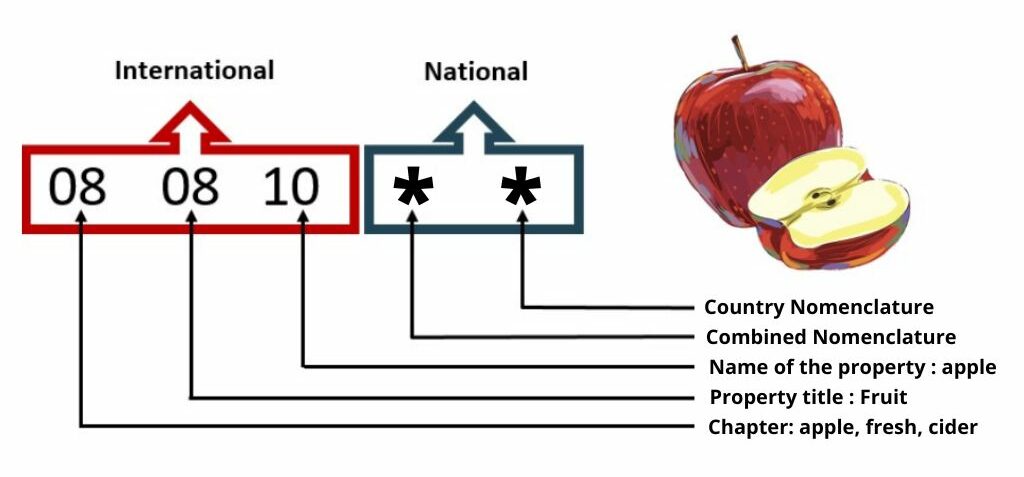Shipping goods from Malaysia to Oman without an all-knowing genie in a bottle? Don't worry! The good news is: it's not impossible, and that's where our guide comes in handy. Jokes aside, we know how daunting it can feel, especially when it comes to understanding rates, transit times, and customs regulations. This destination guide provides in-depth insights into various types of freight options, equips you with a clear understanding of customs clearance, and breaks down duties and taxes in a digestible manner. Expect tailored advice specifically for businesses that are seeking to iron out the complexities of shipping goods across borders. If the process still feels overwhelming, let DocShipper handle it for you! As a seasoned international freight forwarder, we transform potential challenges into successful freight journeys, ensuring a smooth transporting experience every step of the way.
Table of Contents
Which are the different modes of transportation between Malaysia and Oman?
Picking the best transport route from Malaysia to Oman isn't as simple as hopping on a plane. Imagine standing on the shores of Malaysia, staring at an expansive road map. The distance is quite vast, and there's no direct land route due to international borders. Essentially, you've got two friendly giants at your service - the relentless ocean waves and the swift whizzy clouds of the sky. The choice boils down to either sea freight or air freight – each with their distinct speed, cost, and cargo capacity. Essentially, it's like choosing between a big, strong elephant or a quick, nimble hawk to carry your goods.
How can DocShipper help?
Need to ship goods from Malaysia to Oman? Confused by complex paperwork and customs duties? Look no further! DocShipper offers tailored solutions for all your freight forwarding needs. We handle the administrative hassles, ensuring your shipment arrives safely and on time. Dial us up for a free consultation. Or better yet, request a free estimate - delivered to your mailbox within 24 hours!
DocShipper Tip: Sea freight might be the best solution for you if:
- You're dealing with hefty quantities or oversized goods. Sea transport is your go-to for maximizing space without stretching your budget.
- Time sensitivity isn't a concern for your shipment. Ocean freight is known for its leisurely pace, especially when compared to the speed of air or rail.
- Your supply chain connects key international harbors. This positions you to take full advantage of a wide-reaching network of ocean trade routes.
Sea freight between Malaysia and Oman
Relish the strategic trade ties between Malaysia and Oman, which have grown into a robust interconnection of high-volume goods shipping via the sea route.
The bustling cargo ports of Kuantan and Duqm are often humming with activity, acting as vital links in this ocean-based trade.
Yet, each crate and container exchanged represents a complex task for businesses. Mistakes in shipping between these nations can be expensive, both in terms of time and resources.
For instance, failure to adhere to specified packaging standards could result in delayed customs clearance.
Sea freight, despite its turtle-like speed in the race of logistics, is king when it comes to cost-effectiveness. Imagine our vast oceans as the world's biggest freeway, perfect for your colossal cargo needs.
However, embarking onto this shipping freeway is no child's play and many businesses often struggle with more than just their compass.
In this guide, we dive deep into the best practices that can save you from these tumultuous undertows, preparing you to master the mighty sea freight process. Let's get your business ready for smooth sailing!
Main shipping ports in Malaysia
Port of Port Klang
Location and Volume: Located on the west coast of Peninsular Malaysia, Port Klang is the largest port in the country, serving as a major import/export hub It has a shipping volume of over 14.06 million TEUs.
Key Trading Partners and Strategic Importance: The Port of Klang conducts trade chiefly with China, although it has strong connections to other ASEAN nations, Europe, USA, and Australia, establishing itself as a vital gateway to international markets.
Context for Businesses: If you're looking to maximize trade across the Asia Pacific or leverage the port's robust rail and road links, Port Klang could be an essential part of your strategy.
Port of Tanjung Pelepas
Location and Volume: Situated in Johor, at the southern tip of Peninsular Malaysia, Tanjung Pelepas is known for its efficient service. With a shipping volume of almost 11.2 million TEUs, it ranks among the top 20 busiest ports in the world.
Key Trading Partners and Strategic Importance: Key trading partners extend across a variety of industries, with the primary focus on China, India, the US, and the EU. As the designated port for state-of-the-art transport and logistics, it’s also a notable regional transshipment hub.
Context for Businesses: If you're looking to benefit from fast direct transshipments and superior links to Malaysia's Free Trade Zones, consider the Port of Tanjung Pelepas.
Penang Port
Location and Volume: Nestled on the northwestern coast of Peninsular Malaysia, Penang Port is the country's oldest port and handles about 1.52 million TEUs.
Key Trading Partners and Strategic Importance: It maintains diverse trade routes, with significant trade interactions with China, Hong Kong, Vietnam, and Thailand. As a leading bulk and break-bulk port in Northern Malaysia, Penang is crucial in the trade of commodities.
Context for Businesses: If you're planning to expand your reach in Northern Malaysia or trade in bulk commodities, Penang Port may serve your business well.
Port of Johor (Pasir Gudang Port)
Location and Volume: Positioned on Malaysia’s southern tip, Johor Port is a multipurpose port with a total shipping volume of approximately 1.35 million TEUs.
Key Trading Partners and Strategic Importance: It has a diverse trading portfolio, with key partners across Asia, Australia, the US, and Europe. Johor Port is strategically placed to serve the flourishing industrial and commercial sectors of Southern Malaysia.
Context for Businesses: If you're seeking efficient and well-rounded shipping options in Southern Malaysia, Johor Port is worthy of consideration.
Port of Kuantan
Location and Volume: Situated on the east coast of Peninsular Malaysia, Port of Kuantan is a crucial link to the South China Sea, with an annual shipping volume that exceeds 24 million freight weight tonnes.
Key Trading Partners and Strategic Importance: Key trading partners include China, Singapore, Indonesia, and Australia. Its strategic location to the heavy industrial area makes it vital for the industries such as iron, steel, and chemicals.
Context for Businesses: If your business is focused on heavy industries, the Port of Kuantan is a strategic choice due to its excellent connections and heavy-duty capabilities.
Bintulu Port
Location and Volume: Bintulu Port in Sarawak, East Malaysia, predominantly serves as an LNG and petroleum export hub, with an annual shipping volume just shy of 47.7 million TEUs.
Key Trading Partners and Strategic Importance: Its primary trading partners include countries across Asia, Europe, and the Americas, with an intense focus on petroleum-related commodities due to the proximity of Malaysia's Petroleum National Berhad.
Context for Businesses: If you're dealing with LNG or petroleum goods, Bintulu Port offers specialized services and exceptional access to crucial industry players.
Main shipping ports in Oman
Sultan Qaboos Port
Location and Volume: Located in the heart of Muscat, the capital of Oman, Sultan Qaboos Port was once the main commercial port in Oman but now primarily serves cruise ships and local shipping requirements. Managed 1.6 million tons of cargo in 2023.
Key Trading Partners and Strategic Importance: As Oman's historical port, Sultan Qaboos Port has established partnerships with various countries across the Middle East and beyond, primarily for local and regional trade, including imports and tourism. Its transformation into a hub for cruise ships has also boosted its importance for the country's tourism industry.
Context for Businesses: If your enterprise is inclined toward tourism, local or regional maritime trade, Sultan Qaboos Port could potentially be a vital link in your shipping logistics.
Sohar Port
Location and Volume: Located near the Strait of Hormuz, a critical maritime route, occupies a key strategic position. It had a capacity of 62 million TEUs in 2023.
Key Trading Partners and Strategic Importance: Sohar Port has gained prominence due to its partnerships with international maritime trade powers, such as China, and is part of the Belt and Road Initiative. The port also has an essential free zone providing various benefits for businesses.
Context for Businesses: If your business seeks to tap into the Middle Eastern market or benefit from a strategic location near the Strait of Hormuz, Sohar Port's position and facilities may be particularly advantageous.
Salalah Port
Location and Volume: Strategically located in the Arabian Sea's trading routes, it is equipped to handle over 18,7 million TEUs annually.
Key Trading Partners and Strategic Importance: Salalah Port's strategic location on the Arabian Sea has made it a key trading partner for countries like India, China, and numerous East African nations. It has been established as a transshipment hub, connecting Asia with Africa and Europe.
Context for Businesses: For businesses requiring a critical transshipment point between Asia, Africa, and Europe, you may find Salalah Port's offerings vital to your shipping strategy.
Duqm Port
Location and Volume: It is a relatively new yet rapidly expanding port located in central-eastern Oman, designed to handle around 5,3 million TEUs.
Key Trading Partners and Strategic Importance: Still in its growth phase, Duqm Port is rapidly establishing itself with trading partners globally, underpinned by its strategic location and the broad Omani initiative to develop Duqm as an international hub.
Context for Businesses: If your business is open to exploring new frontiers in the shipping logistics, Duqm Port's strategic central location and its rapid development might present new opportunities.
Keep in mind that it's essential to liaise with a trusted freight forwarding service to better understand the pros and cons of using these ports for international shipping, based on your business's specific needs.
Should I choose FCL or LCL when shipping between Malaysia and Oman?
Deciding between Full Container Load (FCL) or Less than Container Load (LCL), also known as consolidation, for your Malaysia-Oman shipment? Your choice has hefty implications for costs, delivery timing, and overall shipping success.
This section will outline key distinctions and help you determine the best match for your business's specific needs. So let's dive in to understand these sea freight options and empower you to take a more strategic shipping decision.
Buckle up! Your journey to savvy decision-making starts now.
LCL: Less than Container Load
Definition: LCL (Less than Container Load) shipping is a method of freight transporting where a shipment does not fill an entire container. Instead, your cargo shares space with other clients' goods in the same container.
When to Use: Businesses using LCL freight find it cost-effective and convenient for lower volume shipments, specifically when cargo is less than 13-14-15 cubic meters (CBM).
Example: Consider a manufacturing company in Malaysia needs to ship 10 CBM of automotive parts to a client in Oman. They choose LCL shipment because their goods don't fill a full container. This way, they split the shipping costs with other businesses also shipping goods in the same container.
Cost Implications: While LCL freight might have slightly higher costs per unit compared to full container load (FCL), it offers cost-savings for businesses with smaller quantities as they only pay for the space they use.
Companies can control their inventory better and make lower volume yet more frequent shipments, reducing warehousing costs. LCL shipment offers more flexibility and can be more cash-flow friendly for small to medium-sized businesses.
FCL: Full Container Load
FCL (Full Container Load) shipping is a type of sea freight transportation where an entire container is exclusively reserved for a single shipment.
This option ensures the safety of your goods, as the sealed container remains closed from your pickup location in Malaysia to the destination in Oman.
FCL is typically chosen when the volume of cargo exceeds 13-15 Cubic Meters (CBM). Picture this: You're a manufacturer of electrical appliances based in Malaysia and have just sealed a deal with a retailer in Oman.
Your shipment volume fills up more than half of a 20'ft container or perhaps even a 40'ft container. Opting for FCL shipping in such cases is your best bet, as it turns out to be economical and secure, especially for high-volume shipments.
In regard to cost implications, an FCL shipping quote is typically cheaper for large volumes because the charge is per container rather than per cubic meter. This makes FCL highly cost-effective when moving larger quantities.
But remember, each shipment is unique - its weight, dimensions, and logistics can affect the final quote. It's always wise to consult with a freight forwarder or shipping expert for an accurate FCL shipping quote.
Unlock hassle-free shipping
Facing the dilemma of choosing between consolidation or full container for shipping goods from Malaysia to Oman? Untangle that knot with DocShipper. Our experienced ocean freight professionals analyze factors like cargo size, type, urgency, and costs to suggest the best shipping option tailored to your needs. Simplify your cargo shipping process and make it hassle-free with us. Join businesses who have already leaped forward. Get your free estimate today. Let's sail together towards seamless shipping!
How long does sea freight take between Malaysia and Oman?
On average, sea freight between Malaysia and Oman takes anywhere from 14 to 25 days, dependent on a multitude of factors. The shipping time-span takes into consideration the specific ports involved, weight of the cargo, and also the type of goods being transported.
In essence, there's no one-size-fits-all response to this question. Therefore, it would be beneficial to consult with a freight forwarding specialist like DocShipper to get a precise and customized quote for your shipment's situation.
Now, to give you an idea of port-to-port transit times, let's consider the main seaports in both countries:
| Malaysia Ports | Oman Ports | Averages Transit Time (Days) |
| Port Klang | Port Sultan Qaboos | 21 |
| Port of Tanjung Pelepas | Sohar Port | 15 |
| Port of Penang | Salalah Port | 14 |
| Bintulu Port | Duqm Port | 16 |
*Please note that the times displayed are averages and the actual durations may vary.
How much does it cost to ship a container between Malaysia and Oman?
Determining the exact shipping cost between Malaysia and Oman can be quite akin to solving a jigsaw puzzle - every piece counts! The ocean freight rates for shipping a container can broadly range from a few hundred to several thousand dollars per CBM.
The costs primarily hinge upon specifics like Point of Loading, Destination Point, chosen carrier, nature of goods, and unpredictable monthly market shifts. Although this complexity makes it hard to provide a pinpoint price, fear not!
Our seasoned shipping specialists tailor quotes to your specific case, dedicated to securing you the best rates. Your custom shipping needs are our top priority. Remember, we're here to turn the seemingly difficult into a streamlined, effortless process.
Special transportation services
Out of Gauge (OOG) Container
Definition: An OOG container or Out of Gauge cargo pertains to products exceeding the dimensions of standard shipping containers. This is ideal when you're handling large, unconventional goods.
Suitable for: Large equipment, machinery, and oversized industrial components.
Examples: Transporting heavy equipment such as oil drilling rigs, machine parts, or wind turbines from Malaysia to Oman.
Why it might be the best choice for you: If you're dealing with outsized or heavy goods, the flexibility of OOG containers allows for safe and efficient transportation while ensuring your goods reach Oman in prime condition.
Break Bulk
Definition: Break bulk shipping involves individually loading loose cargo onto a vessel.
Suitable for: Varied sized goods that cannot be efficiently or safely packed into containers.
Examples: Shipping furniture, heavy machinery, or construction equipment.
Why it might be the best choice for you: Break bulk shipping enables you to send a diverse range of goods, from small to oversized, providing the flexibility to transport items that do not fit standard shipping containers.
Dry Bulk
Definition: Dry bulk refers to cargo shipped in large quantities without packaging, poured directly into a ship’s hold.
Suitable for: Granulated and dry materials like coal, grain, or sand.
Examples: Exporting construction materials like cement or gypsum from Malaysia to the burgeoning construction market in Oman.
Why it might be the best choice for you: If your business deals with mass quantities of non-packaged, dry commodities, dry bulk shipping becomes the most effective and cost-efficient method.
Roll-on/Roll-off (Ro-Ro)
Definition: A Ro-ro vessel is explicitly designed to carry wheeled cargo that drives on and off the ship on their wheels or using a platform vehicle.
Suitable for: Cars, trucks, trailers, heavy equipment, and other wheeled machinery.
Examples: Transporting automobiles or heavy machinery from Malaysia's manufacturing hub to Oman.
Why it might be the best choice for you: If your cargo consists of motorized goods or anything on wheels, this method ensures the safe and efficient delivery of such goods with minimal handling.
Reefer Containers
Definition: Refrigerated containers or reefer containers are used for goods which need to be transported at a consistent cool or frozen temperature.
Suitable for: Perishable goods, pharmaceuticals, fruits, meats, dairy products, and other temperature-sensitive goods.
Examples: Shipping fresh fruits, seafood, or medicines from Malaysia to Oman while ensuring the preservation of their quality.
Why it might be the best choice for you: If your goods are temperature-sensitive and require certain climate conditions throughout the journey, reefer containers provide the precise temperature control essential for maintaining the integrity of your products.
Each shipping method has its unique advantages depending on the kind of goods you need to move. Here at DocShipper, we can help you determine the best method based on your specific shipping needs between Malaysia and Oman.
To get a free shipping quote in less than 24 hours, please don't hesitate to contact us.
DocShipper Tip: Air freight might be the best solution for you if:
- You're pressed for time or facing a non-negotiable deadline. Air freight delivers unparalleled speed when it comes to transit times.
- Your shipment is modest in size, falling under 2 CBM. Air freight is particularly well-suited for these smaller consignments.
- Your supply chain includes destinations that are off the beaten maritime or rail paths. Air freight gives you access to a comprehensive global airport network.
Air freight between Malaysia and Oman
Air freight from Malaysia to Oman: fast, reliable, and cost-efficient for small, high-value deliveries.
Imagine you're shipping precious gemstones or life-saving medicines – items where every second count and value is high.
In these cases, air freight triumphs with its speedy deliveries and unbeatable reliability. Many shippers, however, stumble upon unexpected obstacles when they don't consider certain key factors.
It's just like trying to prepare a deluxe meal without knowing the recipe – you might end up with an expensive disappointment.
Missteps occur commonly when assessing the freight price - the 'weighty' confusion around using the correct weight formula, for instance.
Or ignoring certain best practices can rack up the bill real fast. In the following sections, we'll unpack these common mistakes, and provide you with easy-to-follow solutions.
In this guide, you'll discover, example-by-example, how to avoid invisible pitfalls and ensure your air freight journey from Malaysia to Oman is just as smooth as a captain's takeoff on a clear day.
Air Cargo vs Express Air Freight: How should I ship?
Diving straight into the cloud-high details for your Malaysian-Omani route, let's get acquainted with the two lifelines of the sky: air cargo and express air freight.
Think of it this way - air cargo is like booking a business class seat on a commercial airline, sharing the ride with others, while express air freight is like chartering your private jet, reserved for your goods only.
So, what's your pick for your business, co-sharing or flying VIP?
Should I choose Air Cargo between Malaysia and Oman?
Whether air cargo fits your business shipping needs from Malaysia to Oman depends on several factors. Notably, airlines such as Malaysia Airlines and Oman Air offer reliable and cost-effective options in this route.
Airway provides quicker delivery but at the cost of longer transit times due to fixed schedules.
Yet, air transit becomes more viable for cargo over 100/150 kg (220/330 lbs). Always consider your budget constraints as well as the specific needs of your shipment when selecting your mode of transport.
Should I choose Express Air Freight between Malaysia and Oman?
Express air freight is a unique service utilizing cargo-only aircraft, perfect if your Malaysia-Oman shipment is under 1 CBM or weighs less than 100/150 kg (220/330 lbs).
By choosing this, you get fast, reliable delivery, priority customs clearance, and shipment tracking.
International courier firms such as FedEx, UPS, or DHL offer this service. If time is more important than cost for your limited bulk shipments, express air freight is definitely an attractive option.
Consider this for your next international logistical needs.
Main international airports in Malaysia
Kuala Lumpur International Airport
Cargo Volume: Approximately 1.3 tons per year
Key Trading Partners: China, Singapore, Japan, US, and Indonesia.
Strategic Importance: Serving as Malaysia's main international airport and one of the major airports in Southeast Asia, its strategic location is ideal for connecting Asia with Europe and the Middle East.
Notable Features: Equipped with a Free Commercial Zone and Advanced Cargo Centre with a total capacity of 1.25 million tons annually.
For Your Business: If you're shipping perishable goods, this airport might offer a competitive edge with its state-of-the-art perishables handling facilities.
Penang International Airport
Cargo Volume: Handles over 175,000 tons of cargo annually.
Key Trading Partners: United States, Hong Kong, China, and Germany.
Strategic Importance: This airport is strategically located as a transit hub for Northern Malaysia focusing on cargo related services.
Notable Features: The airport is known for its specialized cargo handling services particularly for semiconductor manufacturers.
For Your Business: If you're involved in the tech industry, its excellent semiconductor cargo services could align well with your needs.
Sultan Abdul Aziz Shah Airport
Cargo Volume: Handles over 60,000 tons annual cargo.
Key Trading Partners: Singapore, Thailand, Indonesia, and China.
Strategic Importance: Primarily used for charter and commercial flights, it is a gateway to local and semi-international destinations.
Notable Features: Has dedicated cargo and freight services, logistical facilities for import, export, and trans-shipment.
For Your Business: Frequent charter flights can give you added flexibility in managing difficult-to-schedule shipments.
Kuching International Airport
Cargo Volume: Handles about 30,000 tons of cargo annually.
Key Trading Partners: Australia, Indonesia, Singapore, and China
Strategic Importance: It's the major gateway into Sarawak, the world's number one exporter of pepper and second in palm oil.
Notable Features: Quality cargo services for shipping agricultural products.
For Your Business: The airport could be your ideal choice if you ship agricultural or food products.
Kota Kinabalu International Airport
Cargo Volume: Handles about 25,000 tons of cargo annually.
Key Trading Partners: China, South Korea, Singapore, Taiwan, and Hong Kong.
Strategic Importance: Northern Borneo’s most important cargo and passenger hub, with good connectivity to Asia-Pacific economies.
Notable Features: Notable for shipping exotic products of Sabah, such as sea cucumbers and bird's nests.
For Your Business: If your business involves exotic goods, then this airport's specialized shipping could be a valuable asset.
Main international airports in Oman
Muscat International Airport
Cargo Volume: The cargo terminal has a handling capacity of 228,000 tonnes annually, making it the busiest in Oman.
Key Trading Partners: India, UAE, and United Kingdom contribute the most in terms of trade volume.
Strategic Importance: It's the gateway to Oman's capital, Muscat, and due to its central location in the Gulf, it plays a crucial role in connecting East and West.
Notable Features: The cargo terminal features state-of-the-art facilities capable of handling various types of cargo, including perishables, pharmaceuticals, and live animals.
For Your Business: If your company frequently ships to or from Muscat or focuses on markets in the Middle East, utilizing Muscat International Airport can offer high cargo handling capacity and a central location maximizing your shipping efficiency.
Salalah International Airport
Cargo Volume: The annual cargo handling capacity is 40,000 tonnes with a considerable growth trajectory.
Key Trading Partners: Major trading partners include India, Qatar, and Kuwait.
Strategic Importance: Its location on the Arabian sea makes it a prime choice for trade with the Indian Subcontinent, Africa and Europe.
Notable Features: The airport is renowned for its modern cargo facilities and efficiency serving as a main cargo hub in southern Oman.
For Your Business: If your shipping routes often include southern Oman, Africa, or the Indian Subcontinent, you may find Salalah International Airport's strategic location and efficient operations a boon for your logistics network.
Sohar International Airport
Cargo Volume: Currently handling a modest volume, the airport is set for significant growth thanks to investment in infrastructure.
Key Trading Partners: Extensive air cargo relationships with UAE, India and Saudi Arabia.
Strategic Importance: Positioned ideally between Muscat and the UAE border, it effectively serves as a logistical hub for northern Oman regions and the UAE.
Notable Features: The airport is part of the Sohar Freezone, providing multiple advantages such as faster clearance and reduced custom duties.
For Your Business: If you frequently ship goods to the northern regions of Oman or the UAE, the Sohar International Airport, due to its strategic location and affiliation with the Freezone, can offer valuable time and cost-saving benefits.
How long does air freight take between Malaysia and Oman?
An average air freight journey between Malaysia and Oman can typically take anywhere from 5 to 7 days.
However, this timeframe is subject to change and can be influenced by a variety of factors such as the specific airports involved, the exact weight of the goods being shipped, and the nature of the goods themselves.
Remember, these are just estimates – for the most precise and tailored information, a trusty freight forwarder like DocShipper is your best bet to get your goods exactly where they need to be, when they need to be.
How much does it cost to ship a parcel between Malaysia and Oman with air freight?
Estimating a generic shipping rate on a per kg basis between Malaysia and Oman, you could consider a wide range of $2 to $10.
However, the accurate rate can considerably fluctuate due to multiple factors such as departure and arrival distances from the airport, parcel dimensions, weight, and the nature of goods.
Our commitment is to offer competitive rates tailored to your unique needs, as we prefer to calculate each quote case by case.
This assures you receive accurate and fair pricing for your shipments. One simple step to start - reach out to us, and get a free quote tailored to your needs within 24 hours.
What is the difference between volumetric and gross weight?
Gross weight refers to the overall weight of a shipment, including packaging. Volumetric weight, on the other hand, is a calculation based on the total space occupied by a shipment, not its actual weight.
To calculate the gross weight in air freight, simply weigh your shipment in its ready-to-ship state. For instance, if the packaged shipment weighs 30kg, then that's your gross weight (or 66.14 lbs).
The volumetric weight for air cargo is calculated differently. It's based on the dimensional weight, which is the shipment's length, width, and height in centimeters, divided by a specific factor.
The International Air Transport Association (IATA) sets this standard factor at 6000 for air cargo. Let's say your shipment is 40cm x 40cm x 40cm. The calculation would be (40x40x40) / 6000 = 10.67kg (or 23.52 lbs).
Express Air Freight typically uses a different factor, typically 5000. Then, the same package would have a volumetric weight of (40x40x40) / 5000 = 12.8kg (or 28.22 lbs).
But why do these calculations matter? Freight charges in air shipping are based on the heavier of the two—gross weight and volumetric weight. An understanding of this concept helps in budget planning and can lead to significant cost savings in your shipping expenses.
DocShipper tip: Door to Door might be the best solution for you if:
- You value convenience and want a seamless shipping process, as door-to-door takes care of every step from pickup to delivery.
- You prefer a single point of contact, as door-to-door services typically provide a dedicated agent to handle all aspects of the shipment.
- You want to minimize the handling of your goods, reducing the risk of damage or loss, as door-to-door minimizes transitions between different modes of transport.
Door to door between Malaysia and Oman
Transcending borders, 'Door to Door' shipping is a comprehensive international freight strategy that takes your goods from their origin in Malaysia right to their destination in Oman, managing every step in between.
From cost-efficiency to streamlined customs clearance and oversight, this approach presents numerous benefits. So, grab your shipping manifest and let's dive into the nitty-gritty of Door to Door shipping!
Overview – Door to Door
Struggling with the complexities of shipping goods from Malaysia to Oman? Door to door service could be your pivotal stress-reliever.
As our most popular offering, businesses love how it simplifies the logistics process, eliminating confusing paperwork and unclear customs requirements.
However, it's worth acknowledging that costs can be higher and delivery times might fluctuate.
Despite these trade-offs, the ease and comprehensiveness of door to door shipping service helps to make international freight forwarding seamless and worry-free – a valuable peace of mind for many of DocShipper's clients!
Why should I use a Door to Door service between Malaysia and Oman?
Ever tried herding cats? Well, juggling international shipments can feel pretty similar! But Here's some relief: Using a Door-to-Door service between Malaysia and Oman could take some of that pesky freight-craziness off your plate. Here's why:
1. Less Stress, More Success: Door-to-Door service handles everything from pickup to delivery. You won't have to sort through a spaghetti stack of logistics issues.
All you need to do is inform the forwarder about your cargo and let them handle the rest! Consider it your escape ticket from logistician’s labyrinth.
2. Tick-Tock, Meet Your Clock: Urgent order on the line? Door-to-Door service is punctuality personified.
By offering streamlined procedures and less handling stages, it ensures timely deliveries. Your clock will thank you!
3. Special Care for your Special Cargo: Not all cargo is created equal, especially when it’s complex. This service offers specialized handling from experts, providing the custom care your cargo craves for.
4. Destination Station: With Door-to-Door, say goodbye to the juggling act of coordinating multiple truckers.
Your shipment will be taken care of from trucking at the origin point to delivery at the final stop - It's like a VIP pass for your goods.
5. Convenience is King: Lastly, it's about convenience. As much as we love a good logistician’s challenge, we'd bet you have other business matters to attend.
Let Door-to-Door service take the logistical load off, so you can focus on what really matters - growing your business.
So, why should you use Door-to-Door service for your Malaysia-Oman connection? Simple. It's your one-way ticket to simplified, on-time, and hassle-free international shipping.
DocShipper – Door to Door specialist between Malaysia and Oman
Experience unparalleled, stress-free door-to-door shipping between Malaysia and Oman with DocShipper. Entrust your goods to us and we'll expertly manage everything from packing to customs.
Across all modes of transport, we guarantee seamless service led by a dedicated Account Executive. Choose us for proficient, worry-free shipping solutions.
Reach out now for a free quote in less than 24 hours or instantly connect with our knowledgeable consultants. Propel your business to new heights with DocShipper's comprehensive logistics support.
Customs clearance in Oman for goods imported from Malaysia
Customs clearance refers to the official process of getting goods across international borders. Navigating this for Oman imports from Malaysia can be a labyrinth of unexpected fees, charges, and a myriad of complexities making this a daunting venture.
It's vital to comprehend the customs duties, taxes, quotas, and licenses to avoid goods stagnation at the customs. This guide will deep-dive into these crucial elements to empower you with all the necessary knowledge.
No worries though, DocShipper is in your corner for seamless clearance of any goods worldwide. To get started with an estimate, reach out to our team providing the goods' origin, value, as well as the HS Code.
These three factors are fundamental in forging ahead with your project budgeting endeavor.
How to calculate duties & taxes when importing from Malaysia to Oman?
Navigating the labyrinth of international shipping charges can be daunting, especially when it concerns duties and taxes from one country to another.
That being said, understanding how to estimate duties and taxes when importing goods from Malaysia to Oman is crucial for accurate budgeting and planning.
Successful estimation requires knowledge of several important factors: the country of origin, the Harmonized System Code or 'HS Code', the customs value, the applicable tariff rate, and any additional taxes and fees that may apply to your products.
The first and foremost step in this journey is to pinpoint the country where the goods you plan to import were manufactured or produced.
Recognizing the origin of your goods aids in determining the applicable duty tariff rate and allows customs officials to implement country-specific trade agreements.
Establishing the made in label of your shipped items is a vital step towards accurate cost estimation.
Step 1 - Identify the Country of Origin
Step 1 in estimating duties and taxes begins by pinpointing the 'Country of Origin'. Here are five simple reasons why this step is a power play.
First, it helps you understand your product's journey, placing you in a strong position for strategic planning.
Second, it aids in accurately predicting customs duties, saving you from unexpected costs.
Third, you can better assess risks and comply with import regulations, ensuring a smooth shipping process.
Secondly, Malaysia and Oman share robust trade bonds. The Malaysia-Oman Free Trade Agreement, for example, slashes substantial customs duty rates. Leveraging such agreements can result in significant cost savings.
Lastly, consider import restrictions. Complexities such as 'Hazardous Material Classification' or 'Banned Goods' often trip shippers up. It’s crucial to stay clear of such roadblocks.
Advice from a professional freight forwarder can clarify these points and help steer you clear of any regulatory pitfalls.
Remember, knowing your product's origin isn't just about labeling—it's about making strategic shipping decisions.
Step 2 - Find the HS Code of your product
The Harmonized System(HS) code is a universally recognized system of labels. Used worldwide by customs authorities, this efficiently categorizes and identifies products for tax, duty, and regulations.
HS codes play a crucial role in your shipping process and affect everything from the required documentation to the import duties you'll end up paying.
Typically, the most straightforward way to uncover the HS code of your specific product is to inquire directly with your supplier.
Being involved with international trade, suppliers are well-versed in the nature of their commodities and related customs regulations.
But suppose you find yourself unable to acquire the HS code from your supplier, no worries. We've got you covered with a simple step-by-step guide to finding it yourself.
Step one, you land on the Harmonized Tariff Schedule and utilize their HS code lookup tool.
Step two, insert your product's name into the search bar located on the site.
Step three, after the search results are generated, pay keen attention to the Heading/Subheading column; this is where your product's HS code will be provided.
It's important to Note: accuracy matters immensely when determining your product's HS code. An erroneous code can cause shipment delays and perhaps attract fines. Precision is paramount in this identification process!
Here's an infographic showing you how to read an HS code.
Step 3 - Calculate the Customs Value
Unraveling the concept of customs value can be a bit tricky, but we've got this. Let's jump right in. Think of customs value as the total cost your shipping needs to reach Oman from Malaysia.
It's different from the product value; it's actually the CIF (Cost, Insurance, and Freight) value. So, if your gems from Malaysia cost $1000, the shipping charges are $200, and insurance is $50 - your customs value is $1250, not just $1000.
Your duties in Oman are calculated based on this $1250. Understanding this distinction can save you from unnecessary surprises during your shipment's customs clearance.
So, always remember: product value + shipping charges + insurance = customs value. It's your magic formula!
Step 4 - Figure out the applicable Import Tariff
Understanding import tariffs is crucial for a smooth customs clearance process. Essentially, an import tariff is a tax imposed by the importing country on goods coming from foreign countries.
In Oman, the Ad Valorem tariff is commonly used. This type of tariff is calculated as a percentage of the value of the goods, including costs, insurance, and freight (CIF) - which are charges for insuring and transporting the item.
To identify the applicable import tariff from Malaysia to Oman, follow these steps:
1. Use the Harmonized System (HS) code identified earlier to search on the Oman customs portal or global customs resources.
2. Insert the HS code and find the corresponding tariff rate.
To demonstrate, let's assume you're importing rubber gloves from Malaysia with an HS code 401519. The tariff rate for this product may be 5% in Oman.
If your goods valued at $10,000 and CIF costs are $1,000, the total CIF value will be $11,000.
To calculate the import duty, you multiply the total CIF value by the tariff rate: $11,000 5/100 = $550. The import duty you'll need to pay in this scenario would be $550.
It's essential to stay updated with changing tariff rates and conditions to avoid any unexpected expenditure or customs complications.
Step 5 - Consider other Import Duties and Taxes
In managing your shipment from Malaysia to Oman, an essential aspect is to consider additional duties and taxes, which can differ based on your goods' nature and origin country.
For instance, an excise duty might apply to certain goods like beverages, which is calculated as a percentage of the goods' price. As an example, let's say the excise duty is 50%, and your goods' value is $2000; your total excise duty would be $1000.
Furthermore, anti-dumping taxes might come into play if the product is sold in Oman at a substantially lower price than in Malaysia, protecting Omani businesses from unfair competition.
Let's assume an anti-dumping tax rate of 10%; on a $2000 value goods, the tax adds $200.
The critical tax to remember, though, is VAT. Oman recently implemented a 5% VAT, meaning you'd add $100 for a $2000 goods value.
Remember, these are just hypothetical scenarios to explain the concept, and actual rates may differ. Always verify with a local customs broker or consult the Omani customs authority's official website to confirm actual tax rates and regulations.
Keeping an eye on these additional costs will help ensure there are no unexpected expenses down the line.
Step 6 - Calculate the Customs Duties
Calculating customs duties when importing goods from Malaysia to Oman may seem daunting, but with the correct formula, it becomes much easier.
The customs amount is based on the customs value of the goods, while VAT and anti-dumping taxes are generally figured as a percentage.
Consider an import with a customs value of $1000 and a customs duty of 5%.
Without VAT, you'll pay $50 in customs duties ($1000 x 5%). If VAT is set at 12%, your duty will be $120 ($1000 x 12%); together with customs, the total will be $170.
For an item beset with customs, VAT, anti-dumping tax of 10% and Excise Duty of 15%, your outlay is $1000 X 5% (customs) + $1000 X 12% (VAT) + $1000 X 10% (anti-dump) + $1000 X 15% (Excise) = $420.
Ensure accurate calculations and avoid unwarranted expenses by enlisting DocShipper's professional help. We handle every step of customs clearance around the globe, ensuring you're not overcharged.
Contact us to receive a free quote in less than 24 hours.
Does DocShipper charge customs fees?
As a customs broker in Malaysia and Oman, DocShipper works to smoothen your shipping experience. However, don't confuse customs clearance fees—which we do charge for our service—with customs duties and taxes. The latter go straight to the government, not us.
To ensure transparency, we'll provide you with documents from the customs office, proving you've only paid what's due to the government. So, we don't charge customs duties, but facilitate the process, keeping you in the loop.
Consider customs clearance fees as payments for this personalized service, and not an additional tax imposition.
Contact Details for Customs Authorities
Malaysia Customs
Official name: Royal Malaysian Customs Department
Official website: http://www.customs.gov.my/
Oman Customs 
Required documents for customs clearance
Overwhelmed by the maze of customs paperwork? Relax.
In this guide, we'll make sense of key documents like the Bill of Lading, Packing List, Certificate of Origin, and Documents of Conformity (CE standard), giving you the confidence to conquer custom clearance.
Bill of Lading
If you're shipping goods from Malaysia to Oman, the Bill of Lading (BoL) is your passport to a smooth customs clearance. Consider it the heart of your shipment. It records key data like the nature, quantity, and destination of goods, marking the transfer of item ownership between the seller and the buyer.
Best part? In our digital age, the electronic or 'telex' release, a paperless BoL, speeds up the process. Say goodbye to daunting piles of paperwork and postal delays. For air cargo? Consider AWB as the BoL's counterpart.
It's critical to ensure all details on your BoL or AWB are accurate. A single careless error could lead to customs hurdles - a nightmare you'd want to avoid. So, whether by sea or air, always give the BoL or AWB the attention it deserves.
Packing List
The Packing List is your trusty sidekick while shipping goods from Malaysia to Oman. Imagine this: you're shipping a collection of electronics items. This list tells you, and everyone else involved, what's in each box, including the weight and dimensions.
It's entirely your responsibility to create it - with pinpoint accuracy. Whether you're shipping by air or sea, Oman's customs officials will pair it with your commercial invoice to validate your shipment's contents.
An incorrect Packing List might bottleneck your shipping process, delaying it drastically or even leading to penalties. Think of it like a detailed inventory list of your goods, without it, your shipment may be invisible to everyone!
Commercial Invoice
When shipping goods from Malaysia to Oman, your Commercial Invoice is a critical document. It lists essential details such as description, quantity, and value of the goods. Think of it as your freight's fingerprint—it's unique to each shipment.
Customs in Oman will use it to assess duties and taxes, making its accuracy vital. Misaligned data can spur delays, cost increments, or penalties. An actionable tip here is to double-check your Commercial Invoice matches your packing list and bill of lading.
Also, take note of any country-specific requirements, such as the obligation to include the importer’s tax ID or Special Economic Zone (SEZ) data in Oman. It's your key document, so get it right to ensure smooth sailing through customs.
Certificate of Origin
Navigating the seas of international freight from Malaysia to Oman? A key tool will be your Certificate of Origin (CO). This official document confirms your goods were produced in Malaysia, opening doors, like potentially lower customs duty rates accorded by Oman.
It's vital to clearly state the manufacturing country on your CO with precision. For instance, if you're shipping auto parts manufactured in Penang, the CO should ideally specify this. Its value is clear when obtaining preferential customs duty rates in Oman.
Treat the CO not as a mere formality, but as a strategic asset in your overseas business adventure.
Get Started with DocShipper
After navigating the intricacies of customs clearance between Malaysia and Oman, wouldn't it be reassuring to let experts handle this complex task? At DocShipper, we proficiently manage every step ensuring a stress-free experience. Don't let paperwork bog you down. Reach out to us today and receive a free quote within 24 hours. Let's simplify your shipping operations together!
Prohibited and Restricted items when importing into Oman
Understanding what items are restricted or outright banned is crucial when planning to import goods into Oman. Errors could be burdensome, leading to costly penalties and shipment delays. Let's unravel these often complex regulations together, streamlining your import process.
Restricted Products
- Alcoholic Beverages and Products: You have to apply for special permission from the Ministry of Commerce, Industry, and Investment Promotion to MoCIIP Oman(https://www.mociip.gov.om/)
- Tobacco and Nicotine Products: You're required to obtain a license from the Ministry of Health, Oman to MoH Oman
- Pharmaceutical Medications and Narcotics: Special licensing is mandatory from Oman's Ministry of Health to MoH Oman
- Plants, seeds, and soil: You need to get the green light from the Ministry of Agriculture, Fisheries, and Water Resources. Check out their website: MAFWR Oman https://www.mafw.gov.om/
- Firearms, ammunitions, and explosives: You'll have to obtain a unique permit from the Royal Oman Police to Royal Oman Police
- Cultural artifacts, antiques, and works of art: Ensure you have a license from Oman’s Ministry of Heritage and Tourism to MHT Oman https://www.mhc.gov.om/
- Pet animals: You're obliged to secure an Import Permit from the Ministry of Agriculture, Fisheries, and Water Resources to MAFWR Oman https://www.mafw.gov.om/
- Communications and IT equipment: Don't forget to get your permit from the Telecommunications Regulatory Authority to TRA Oman
Always remember, rules can change rapidly, so it's a good idea to double-check all regulations prior to shipping.
Prohibited products
- Illicit drugs and narcotics: All forms of these substances are strictly prohibited.
- Alcohol: Import of any alcoholic beverages is not permitted.
- Pornographic material: Any media with explicit adult content is forbidden.
- Items offensive to Islamic faith and culture: Materials depicting pigs, alcohol, or anything deemed disrespectful to Islam.
- Forbidden broadcast equipment: Including radio transmitters and satellite communication devices.
- Gambling machines: Such as slot machines, poker machines, or similar.
- Counterfeit money and goods: Including counterfeit currency and pirated goods.
- Certain animal breeds: Specific breeds of pets or livestock may be prohibited.
- Dangerous chemical substances: Certain chemicals that can pose a risk to public safety.
- Hazardous waste material: Prohibited to protect environmental health.
- Weapons and ammunition: Without proper permits, these are banned.
- Counterfeit, altered, or falsified official documents: Such as fake passports or visas.
- Any good with an image or logo: that is offensive to the Islamic faith and customs.
- Certain food products: Certain meats and other foodstuff, depending on country of origin and compliance with health regulation.
Are there any trade agreements between Malaysia and Oman
Yes, there are trade relations between Malaysia and Oman, with ongoing initiatives to strengthen them further. One key development is the Malaysia-Oman Joint Committee on Economic and Trade, fostering dialogues and future opportunities for businesses.
Keep an eye on these movements, as they can significantly lower your shipping costs or simplify customs procedures. However, there are no existing Free Trade Agreements or Economic Partnership Agreements.
The most recent trade agreement between Malaysia and Oman involves a Memorandum of Understanding (MoU) that was signed to enhance trade and investment relations. This agreement aims to boost economic cooperation, investment, and technical collaboration between the two countries.
In terms of trade volume, Malaysia's exports to Oman include electrical and electronic products, palm oil, and machinery, while Oman's exports to Malaysia primarily consist of crude oil and chemical products . This ongoing cooperation is expected to foster stronger economic ties and mutual growth in the coming years.
Malaysia - Oman trade and economic relationship
Malaysia and Oman have sustained a strong trade and economic relationship since establishing diplomatic ties in 1983. Key milestones include the opening of an Omani embassy in Kuala Lumpur in 2006, signalling enhanced bilateral trade.
Predominantly, the energy sector is the bond that unites both nations. Oman heavily relies on Malaysia for its petroleum needs, while Malaysia sees Oman as a dependable supplier of gas.
In 2023, commercial sales between Malaysia and Oman showed a notable performance, with Malaysia’s trade activities experiencing fluctuations throughout the year.For the period of January to November 2023, Malaysia’s total trade amounted to RM2.413 trillion, a decrease of 7.5% compared to the same period in the previous year.
Exports totaled RM1.308 trillion, and imports were RM1.105 trillion, resulting in a trade surplus of RM202.49 billion, which marked an 11.3% decline from the previous year.
For the most recent agreements and developments in their trade and economic relationship, Malaysia and Oman continue to strengthen ties through various bilateral agreements and economic collaborations, aiming to enhance trade, investment, and economic cooperation.
Your Next Step with DocShipper
Unsure about the intricate customs process of shipping between Malaysia and Oman? Let DocShipper simplify it for you. With our all-inclusive services, forget complex duties and paperwork. Save time and resources by trusting the experts who summarise the global logistics world into feasible steps for your business. Ready for a seamless shipping experience? Reach out to DocShipper now.
Additional logistics services
Discover how DocShipper leverages end-to-end logistics management, going beyond shipping and customs to address all your supply chain needs. Enjoy seamless, hassle-free solutions designed to ensure your freight reaches its destination smoothly.
Warehousing and storage
Finding the right warehousing solution in Malaysia and Oman can be a daunting task, especially when your goods require specific conditions like temperature control. Look no further.
Our expertly managed storage facilities efficiently handle these challenges, adjust to your needs, and ensure your items remain in their optimal state.
Want to know more? Check out our dedicated page: Warehousing.
Packaging and repackaging
Ensuring your goods reach Oman from Malaysia unscathed demands meticulous packaging and repackaging.
An experienced agent becomes irreplaceable here - managing everything from bubble-wrapping delicate china to crating industrial machinery.
Think shipments that thrive, regardless of unpredictable sea voyages or turbulent air journeys! More info on our dedicated page: Freight packaging
Cargo insurance
Cargo insurance bestows peace of mind when shipping. Unlike fire insurance, it addresses broader perils including theft, mishandling, or damage due to rough seas.
Imagine your consignment of electronics gets soaked during a thunderstorm at the dock.
Therein lies the magic of cargo insurance - it mitigates such risks, shielding you from potential financial setbacks.
More info on our dedicated page: Cargo Insurance
Supplier Management (Sourcing)
Struggling to find the right suppliers in Asia or East Europe for your Malaysia-Oman shipment? Not sure how to handle international procurement or language barriers?
With DocShipper's Supplier Management service, we'll simplify the sourcing process for you, tackling language challenges and guiding you every step of the way.
Get the full scoop on our Sourcing services
Personal effects shipping
Moving between Malaysia and Oman? Tackling bulky or delicate goods might seem daunting, but fret not.
Our Personal Effects Shipping service ensures your items arrive safely at your new doorstep, regardless of size or shape.
Think of that heirloom dining table or delicate crystal wear. Ready for a seamless transition? More info on our dedicated page: Shipping Personal Belongings
Quality Control
Catch product defects before they disrupt your freight movement from Malaysia to Oman. Quality control inspections offer that security, ensuring your goods meet every specification.
Picture a scenario where thousands of garments are halted at customs for a slight color discrepancy - a timely inspection prevents such oversights.
More info on our dedicated page: Quality Inspection
Product compliance services
Shipping products can get tricky with varying regulations to comply with. That's where our Product Compliance Services step in!
We conduct exhaustive laboratory tests to ensure your product abides by destination regulations, avoiding any unpleasant surprises.
Imagine you're exporting electronics; without proper certification, your consignment could get stuck at customs.
Visit our dedicated page: Product compliance services
FAQ |Freight Shipping between Malaysia and Oman | Rates - Transit times - Duties and Taxes
What is the necessary paperwork during shipping between Malaysia and Oman?
When shipping from Malaysia to Oman, we at DocShipper manage the major documentation for you. This includes the bill of lading for sea transport, or air waybill for air freight. You, as our client, need to supply the packing list and commercial invoice. Certain goods may necessitate further paperwork, such as Material Safety Data Sheets (MSDS) or various certifications. This ensures smooth transit and customs clearance. Comprehensive, accurate documentation is key for seamless shipping, and we are here to walk you through the process every step of the way.
Do I need a customs broker while importing in Oman?
Yes, securing the services of a customs broker for importing goods into Oman is highly recommended. With customs procedures being quite complicated and a multitude of essential documents and details to deal with, a broker can greatly simplify and expedite the process. At DocShipper, helping you navigate these customs complexities is our specialty. We professionally represent your cargo at customs for most shipments. Our experienced team ensures that documents are accurate, all procedures are correctly followed, and unnecessary delays or penalties are avoided. Having a trusted partner like us can ensure a smoother and streamlined process, allowing you to focus on your business.
Can air freight be cheaper than sea freight between Malaysia and Oman?
While a concrete answer can be elusive due to variables such as route, weight, and volume, air freight can indeed be a more cost-effective solution in certain instances. Particularly, if your cargo weighs less than 300 kg (660 lbs) or totals less than 1.5 Cubic Meters, air freight between Malaysia and Oman might be the cheaper choice. At DocShipper, we have a team of dedicated account executives who thoroughly examine every shipping need. Our goal is to leverage our experience and resources to ensure you're provided the most competitive shipping method for your specific circumstances.
Do I need to pay insurance while importing my goods to Oman?
While insurance isn't a legal requirement for importing goods to Oman, we at DocShipper highly recommend it. Many unforeseen incidents can occur during transit, including damage, loss, or theft. Insuring your goods provides a safety net against such mishaps and assures that your valuable cargo is financially protected. It's all about managing risk – a small insurance fee can save you from a significant potential loss. So, while it's your choice to opt for insurance, we strongly advise you do so for peace of mind and financial protection.
What is the cheapest way to ship to Oman from Malaysia?
Considering the geographical proximity and efficient sea trade routes between Malaysia and Oman, the most cost-effective shipping method would be sea freight. Apart from being cost-efficient, sea freight also allows large, heavy goods to be transported affordably. However, if time is a significant factor, air freight, although more expensive, should be considered as it significantly reduces transit time. At DocShipper, we tailor our solutions to your specific needs, factoring in cost, transit time, and the nature of your goods.
EXW, FOB, or CIF?
Choosing between EXW, FOB, or CIF will depend largely on your relationship with your supplier. If they're not particularly well-versed in logistics, we recommend simplifying things by allowing a logistics expert like us to manage the international freight and destination processes. Many suppliers typically sell under EXW or FOB terms, covering all local charges up to their factory door or the origin terminal respectively. Regardless of this, we provide a comprehensive door-to-door service to ensure smooth delivery, catering to your shipment needs every step of the way.
Goods have arrived at my port in Oman, how do I get them delivered to the final destination?
For goods arriving in Oman under CIF/CFR incoterms, you'll need a custom broker or freight forwarder to clear the goods, pay import charges, and arrange delivery. Alternatively, we can manage everything through DAP incoterms. Always confirm these details with your DocShipper account executive. They’re here to clarify these points and ensure a smooth, hassle-free shipping experience.
Does your quotation include all cost?
Yes, rest assured, all costs are succinctly detailed in our quotation, excluding only the duties and taxes at the destination. But don’t fret, these can be estimated professionally by your dedicated account executive upon request. At DocShipper, transparency is our lifeline - we never indulge in hidden fees, sparing you those unpleasant surprises!
